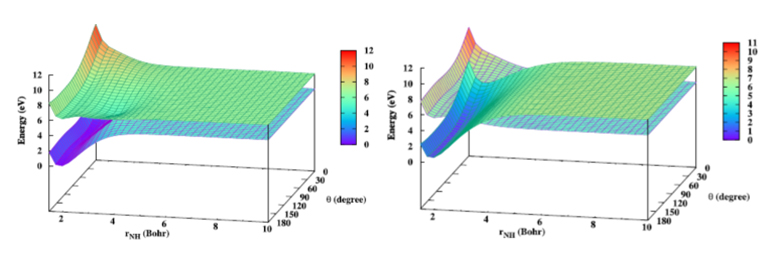The nonadiabatic process is ubiquitous in physical chemistry. In principle, dynamical simulations of nonadiabatic processes can be performed in the adiabatic representation.
However, the derivative couplings are usually sharply varying functions of nuclear coordinates with singularities when degeneracy occurs, such as along conical intersection seams.
An alternative approach is to use the diabatic representation, in which the singular derivative coupling vanishes, and the formula of the nuclear Schrodinger equation is substantially simplified.
A research group led by Prof. FU Bina and Prof. ZHANG Donghui from the Dalian Institute of Chemical Physics (DICP) of the Chinese Academy of Sciences proposed a numerically simple and straightforward, yet accurate and efficient neural networks-based fitting strategy to construct coupled potential energy surfaces (PESs) in a quasidiabatic representation.
The results were published in The Journal of Physical Chemistry Letters on August 24.

3D plots of Hd determined adiabatic (Image by YIN Zhengxi and HONG Yingyue)
The scientists used the proposed approach to construct coupled PESs with conical intersections in a quasidiabatic representation. This approach was conceptually, numerically simple and exclusively replies on the neural networks.
Instead of derivative couplings or interstate couplings, a so-called modified derivative coupling term was fitted by neural networks, resulting in accurate description of near degeneracy points, such as the conical intersections.
This approach is expected to be very useful in developing highly accurate coupled PESs in a quasidiabatic representation in an efficient machine learning-based way.
This work was supported by the National Natural Science Foundation of China, the Ministry of Science and Technology of China and the Chinese Academy of Sciences. (Text by YIN Zhengxi and HONG Yingyue)